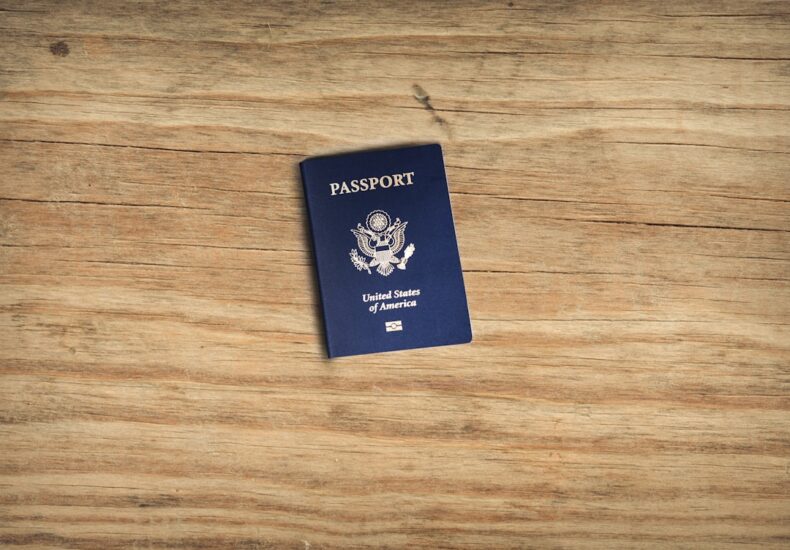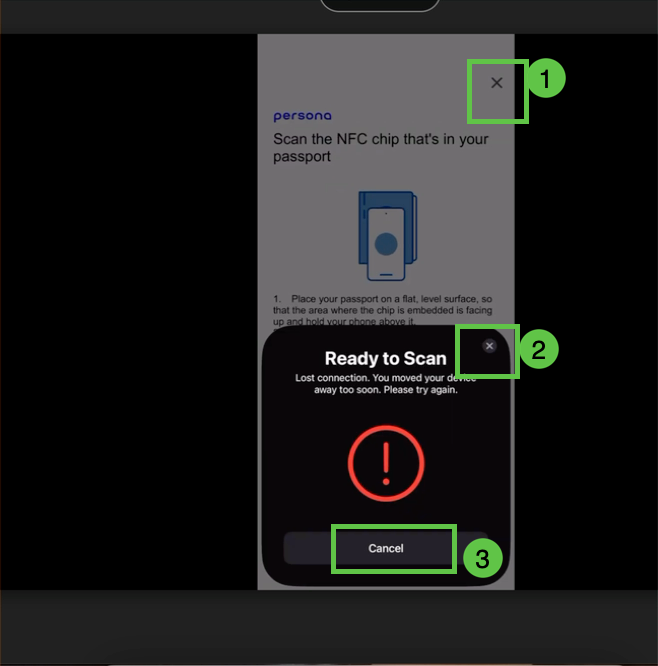
Navigating the New EU Entry/Exit System: A Comprehensive Guide for Global Travelers
The landscape of international travel is in a constant state of flux, shaped by technology, security needs, and a desire for greater efficiency. For anyone who cherishes trips to Europe, a monumental shift is on the horizon. The European Union is preparing to launch its Entry/Exit System (EES), a sophisticated technological overhaul of its border management. This new system represents one of the most significant pieces of Travel News in recent years, set to impact millions of non-EU travelers, including citizens from the UK, USA, Canada, and Australia. It promises to modernize border crossings by replacing the traditional passport stamp with a digital footprint. This comprehensive guide will break down everything you need to know about the EES, from the underlying technology to the practical steps you can take to ensure your next European adventure is as smooth as possible. Understanding these changes is not just about logistics; it’s about maintaining a positive approach to travel, which is essential for our overall Health & Wellness.
What is the EU Entry/Exit System? A Foundational Overview
At its core, the Entry/Exit System is an automated IT system designed to register and track the border crossings of third-country nationals (TCNs) at the external borders of the Schengen Area. This initiative is a cornerstone of the EU’s “Smart Borders” package, aimed at strengthening security and streamlining the travel process. Think of it as a digital ledger that replaces the ink stamps in your passport, providing a more accurate and reliable record of your travel history within the zone.
The Core Purpose: Modernizing Border Control
The primary driver behind the EES is the need to enhance border security and gain a clearer picture of who is entering and leaving the Schengen Area. By automating the process, the system aims to achieve several key objectives. First, it helps member states deal with the increasing number of travelers more efficiently. Second, it systematically detects travelers who have overstayed their authorized short-stay period (the “90/180 rule”). Finally, it assists in the prevention, detection, and investigation of terrorism and other serious criminal offenses. This technological leap is a major update in Lifestyle News for frequent travelers, fundamentally changing the rhythm of crossing a European border.
Who is Affected by the EES?
The EES applies to all non-EU citizens, referred to as “third-country nationals,” who are traveling to the Schengen Area for a short stay of up to 90 days within any 180-day period. This includes travelers from countries that require a visa as well as those from visa-exempt countries like the United Kingdom, United States, Canada, Australia, and New Zealand. It doesn’t matter if you’re traveling for tourism, business, or to visit family; if you are not an EU citizen, the EES will apply to you. This wide reach makes it essential for anyone planning a trip to understand the new protocols, much like one would research Financial Planning before a major investment.
The Data Collection Process: Biometrics at the Border
The most significant change for travelers will be the collection of biometric data. Upon your first entry into the Schengen Area after the EES is active, you will be required to provide two types of biometrics: four fingerprints and a facial image. This data, along with your personal information from your passport, will be stored in a centralized European database for three years. This process is becoming increasingly common, mirroring the biometric technology many of us use for Home Security or unlocking our smartphones. For subsequent trips within that three-year period, the process will be much faster, typically only requiring a passport scan and a quick facial or fingerprint verification to confirm your identity.
The New Border Experience: A Practical Walkthrough
Imagining how this new system will work in practice can help demystify the process and reduce travel-related stress. The goal is a more streamlined, albeit different, experience at the border. Preparing for this change is a form of Self-Improvement, allowing you to become a more savvy and adaptable traveler.
Step 1: The First Encounter with EES
Your first arrival in the Schengen Area under the EES will be the most involved. Many airports and major border points will be equipped with self-service kiosks. Here’s a likely scenario:
- Approach a Kiosk: You will be directed to a self-service terminal.
- Scan Your Passport: Place your travel document on the scanner.
- Provide Biometrics: The kiosk will prompt you to place four fingers from one hand on a scanner, followed by a prompt to look into a camera for a facial image.
- Answer Questions: You may be asked to confirm basic information on the screen.
- Proceed to Border Guard: After completing the kiosk process, you’ll proceed to a border guard who will review your data, verify your identity, and ask any necessary entry questions (e.g., purpose of your visit, proof of accommodation). They will then make the final decision on entry.
This initial registration is a one-time process. For families traveling together, good Parenting Tips would include preparing children for this slightly longer process and explaining what is happening to keep them calm.
Step 2: Subsequent Trips and Streamlined Crossings
Once your biometric profile is stored in the EES, your subsequent entries and exits within the three-year validity period will be significantly faster. You will still need to present yourself at the border, but the process will be largely automated. You will scan your passport and use either your face or fingerprint to be identified by the system. The automated gates will then quickly verify that you have not exceeded your 90-day stay limit. This efficiency is a boon for those who travel frequently for business or leisure, directly impacting their Work-Life Balance.
Case Study: The Digital Nomad and the 90/180 Rule
Consider a freelance graphic designer from the UK who embraces Remote Work and wants to spend three months working from Portugal, Spain, and Italy. In the past, tracking their 90-day limit across different countries relied on passport stamps, which could sometimes be inconsistent. With the EES, every entry and exit is digitally logged with precision. The system will automatically calculate the number of days they have spent in the Schengen Area, leaving no room for ambiguity. This means meticulous planning is essential. The digital nomad must use sharp Productivity Tips to manage their travel schedule to avoid overstaying, as the EES will automatically flag them on exit or a subsequent entry attempt. This makes accurate Budget Tips and itinerary planning more critical than ever.
Beyond the Border: System-Wide Implications for Travelers
The EES is more than just a new procedure at the airport; it’s part of a larger, interconnected ecosystem of EU travel and security regulations. Understanding its relationship with other systems is key to navigating the future of European travel.
The End of Passport Stamping and the Rise of Digital Records
For many, a passport full of stamps is a cherished collection of memories. The EES marks the end of this tradition for the Schengen Area. While some may miss the romance of an ink stamp, the digital record offers unparalleled accuracy. It eliminates the risk of miscalculated stays due to faint, illegible, or missed stamps. Travelers will be able to check their remaining authorized stay duration through a secure online portal, providing clarity and helping them plan their trips with confidence. This shift towards digital records is a piece of Technology for Home and life that we are seeing everywhere, from our medical records to our banking.

ETIAS: The EES’s Digital Companion
It is crucial to distinguish the EES from another upcoming system: the European Travel Information and Authorisation System (ETIAS). While they are linked, they serve different purposes.
- EES is the system at the border that records your entry and exit. You interact with it upon arrival.
- ETIAS is a pre-travel authorization system for citizens of visa-exempt countries. It is an online application that must be completed before you travel.
Once both systems are live, you will need to have a valid ETIAS authorization to board your flight to the Schengen Area. Upon arrival, the EES will verify your identity and check that you have a valid ETIAS. Keeping track of these new requirements demands good Organization Tips; consider creating a digital folder for all your travel authorizations and documents.
Potential Pitfalls and How to Avoid Them
As with any large-scale technological rollout, there may be teething problems. Travelers should be aware of potential challenges:
- Initial Delays: The initial implementation phase could lead to longer queues at borders as both travelers and staff adjust. Building extra time into your travel schedule is a wise precaution.
- Data Privacy: The collection of biometric data naturally raises questions about privacy. The EU has strict data protection regulations (GDPR) that govern how this information is stored, accessed, and secured.
- Increased Scrutiny: The system may flag travelers for secondary checks. This is where having proof of travel insurance, return tickets, and sufficient funds becomes vital. Proper Personal Finance management, ensuring you have access to bank statements or credit card limits, can prevent stressful situations. This also highlights the importance of comprehensive travel insurance for Holistic Health and peace of mind.
Actionable Steps: Preparing for EES and ETIAS

While the systems are not yet live, preparation is about staying informed and adopting a proactive mindset. This approach can significantly enhance your travel experience and support your Mental Health by reducing anxiety associated with the unknown.
Pre-Travel Checklist for a Smooth Journey
Once a firm launch date is announced, here are the best practices to follow:
- Check Passport Validity: Ensure your passport is valid for at least three months beyond your intended departure date from the Schengen Area. It must also have been issued within the last 10 years.
- Apply for ETIAS (Once Live): Keep an eye on official EU sources for the launch of the ETIAS application portal. Apply well in advance of your trip.
- Allow Extra Time at the Border: Especially during the first year of operation, factor in extra time for border control procedures when booking flights and connections.
- Organize Your Documents: Keep digital and physical copies of your ETIAS approval, flight itineraries, accommodation bookings, and travel insurance policy. Good Home Organization skills can be applied here; a well-organized travel wallet or digital folder is invaluable.
- Stay Informed: Follow official Travel News sources, such as the European Commission’s websites, for the latest updates and launch dates.
Mindfulness and Travel: Staying Calm Amidst Change
Adapting to new travel regulations can be stressful. Practicing Mindfulness can help. Instead of viewing the EES as a hurdle, reframe it as a new system to learn—a bit like mastering a new skill or a complex DIY Project. Being well-informed is a powerful tool for Stress Management. Knowing what to expect allows you to move through the process with confidence rather than uncertainty. This proactive approach to change is a key aspect of Personal Development, turning a potential challenge into an opportunity to become a more resilient and prepared global citizen.
Conclusion: The Future of European Travel
The EU’s Entry/Exit System represents a fundamental shift in how the world travels to the Schengen Area. It is a move towards a more secure, digitized, and efficient border that replaces the age-old passport stamp with a biometric profile. For travelers, the key takeaways are clear: expect to provide fingerprints and a facial scan on your first entry, understand that your 90/180-day stay will be calculated automatically and with precision, and prepare for the related ETIAS pre-travel authorization. While the transition may bring temporary delays, the long-term vision is a smarter and more seamless border experience. By staying informed, allowing extra time, and keeping your documents in order, you can confidently navigate this new era of travel and continue to enjoy all that Europe has to offer. This evolution in travel is not just a technical update; it’s a reflection of our increasingly interconnected world.
Archives
- December 2025
- November 2025
- October 2025
- September 2025
- August 2025
- October 2023
- September 2023
- August 2023
- July 2023
- June 2023
- May 2023
- April 2023
- March 2023
- February 2023
- January 2023
- December 2022
- November 2022
- October 2022
- September 2022
- August 2022
- June 2022
- May 2022
- April 2022
- March 2022
- January 2022
- December 2021
- November 2021
- October 2021
- August 2021
- November 2020
- July 2020
- May 2020
- April 2020
- March 2020
- August 2018
- July 2018
- June 2018
- April 2018
- March 2018
Categories
- Age Groups
- AI/ML
- Alternative Medicine
- Animal Health
- Animal Husbandry
- Animals
- Anti-Aging
- Architectural Design
- Auditory Science
- Augmented Reality
- Automation
- Babies
- Baby
- Beauty & Skincare
- Biohacking
- Biomechanics
- Book Reviews
- Breastfeeding
- Budgeting
- Business
- Cardiovascular Health
- Career Advice
- Career Development
- Career Growth
- Cats
- Chess
- Chronobeauty
- Circular Economy
- Cleaning Tips
- Cloud Computing
- Cognitive Health
- Cognitive Performance
- Cognitive Science
- Community
- Community Building
- Community Engagement
- Community Living
- Computer Vision
- Consumer Guides
- Consumer Trends
- Container Gardening
- Content Analysis
- Content Non-Technical
- Content Strategy
- Cosmetic Chemistry
- Cultural Events
- Cycling
- Data Analysis
- Data Engineering
- Data Science
- Design Psychology
- Developer Productivity
- Diet
- Diet
- Digital Identity
- Digital Media
- Digital Wellbeing
- DIY Projects
- Dogs
- Engineering Culture
- Entertainment News
- Environmental Impact
- Environmental Science
- Equity Compensation
- Exercise
- Exercise Science
- Exercise Technique
- Exotic Pets
- Fall Gardening
- Family
- Family Health
- Family Life
- Fashion Business
- Fashion Industry
- Fashion News
- Fashion Tech
- Financial Analysis
- Financial Planning
- Flooring Maintenance
- Food
- Food Psychology
- Food Safety
- Food Tech
- Functional Fitness
- Functional Training
- Future Of Work
- Garden Care
- Garden Maintenance
- Gardening Tips
- Greece
- Greek
- Greek Food
- Gymnastics
- Hardware Engineering
- Health
- Health And Wellness
- Health Informatics
- Health Science
- Health Tech
- Healthcare Management
- Healthy Eating
- Healthy Recipes
- Holistic Health
- Holistic Wellness
- Home & Living
- Home Decor
- Home Financing
- Home Health
- Home Improvement
- Home Organization
- Horticulture
- Identity Management
- Industrial Design
- Industry Analysis
- Infant Nutrition
- Infrastructure Management
- Ingredient Deep Dive
- Integrative Medicine
- Interior Design
- Internet of Things
- Internet of Things (IoT)
- Invalid Request
- Investment Strategies
- Investment Strategy
- IoT
- Kids
- Leadership Development
- Learning Strategies
- Lifestyle
- Lifestyle Brands
- Lifestyle News
- Lifestyle Optimization
- Literary Criticism
- Literature
- Logistics Management
- Material Science
- Materials Science
- Meal Planning
- Media Analysis
- Meditation
- Mental Health
- Mental Performance
- Mental Wellness
- Miami
- Miami Food
- Mind And Body
- Minimalism
- Mobile Development
- Neuroscience
- No Applicable Categories
- Nutrition
- Nutrition News
- Operating Systems
- Operational Resilience
- Opinion
- Organization Tips
- Outdoor Living
- Over 40
- Over 50
- Over 60
- Parenting
- Parenting
- Parenting Strategies
- Performance
- Personal Development
- Personal Finance
- Personal Growth
- Personal Productivity
- Pet Care
- Pet Safety
- Philosophy
- Politics
- Productivity
- Protein
- Psychology
- Psychology of Space
- Reading Culture
- Real Estate Investment
- Recipes
- Regulatory Compliance
- Remote Work
- Renovation Planning
- Resource Management
- Responsible Pet Ownership
- Retail Strategy
- Robotics
- Science
- Seafood
- Seasonal Gardening
- Security
- Self-Care
- Skincare Science
- Skincare Trends
- Sleep
- Sleep Health
- Smoothies
- Social Impact
- Soft Skills
- Soil Health
- Spatial Computing
- Spatial Design
- Stress Management
- Supplements
- Sustainability
- Sustainability Science
- Sustainable Engineering
- Sustainable Fashion
- Systems Engineering
- Tax Optimization
- Tax Strategy
- Travel
- Travel News
- Travel Safety
- Travel Tips
- Trend Analysis
- Uncategorized
- Urban Planning
- Veggie
- Virtual Events
- Volunteering
- Wealth Management
- Wearable Technology
- Wellness
- Wellness Technology
- Work-Life Balance
- Workplace Culture
- World
- Writing
- Writing Skills
- Yoga News
- Zero Waste




Leave a Reply